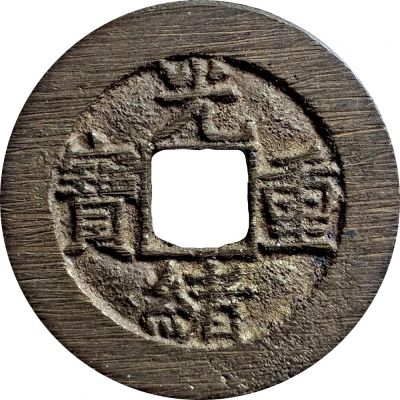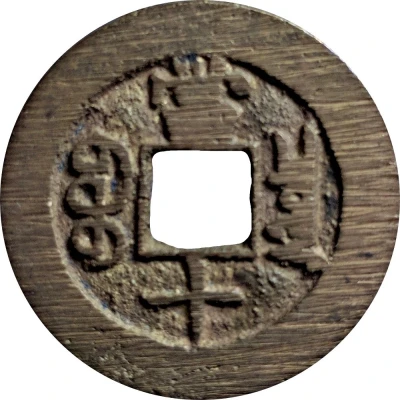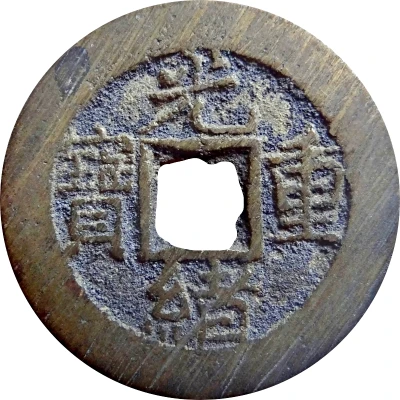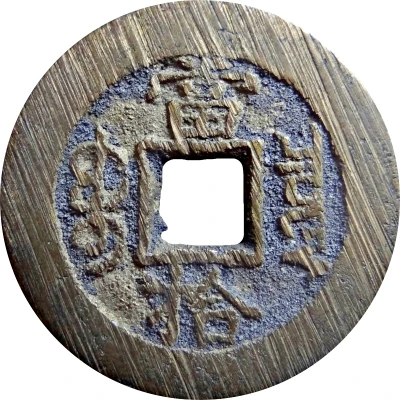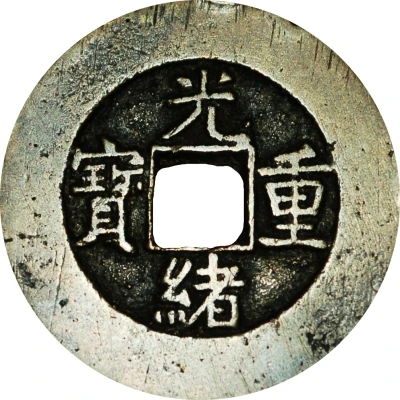


© Alexandr Prokofyev
10 Cash - Guangxu Zhongbao; Boo-yuwan; type A ND
| Brass | 9.25 g | 31 mm |
| Issuer | Empire of China |
|---|---|
| Emperor | Qing dynasty › Guangxu (光緒帝) (1875-1908) |
| Type | Standard circulation coin |
| Years | 1875-1880 |
| Value | 10 Cash |
| Currency | Cash (621-1912) |
| Composition | Brass |
| Weight | 9.25 g |
| Diameter | 31 mm |
| Shape | Round with a square hole |
| Technique | Cast |
| Orientation | Medal alignment ↑↑ |
| Demonetized | Yes |
| Updated | 2024-10-04 |
| Numista | N#130888 |
|---|---|
| Rarity index | 92% |
Reverse
Two Manchu words (read vertically) separated by the hole, all with one Chinese ideogram above and one below.
Scripts: Chinese (traditional, regular script), Mongolian / Manchu
Lettering:
當
ᠪᠣᠣ ᠶᡠᠸᠠᠨ
十
Translation:
Dang Shi / Boo-yuwan
Value 10 / Boo-yuwan
Edge
Plain
Comment
DocBeiStrokesInteresting fact
One interesting fact about the Standard circulation coin 10 Cash - Guangxu (Zhongbao; Boo-yuwan; type A) ND (1875-1880) from Empire of China made of Brass weighing 9.25 g is that it was designed by a French engraver named Charles Fournier, who was commissioned by the Chinese government to create a new currency for the country. Fournier's design featured a combination of traditional Chinese symbols, such as the dragon and the phoenix, with Western-style numerals and lettering. This blend of East and West was intended to symbolize the modernization and Westernization of China during the late Qing period.
